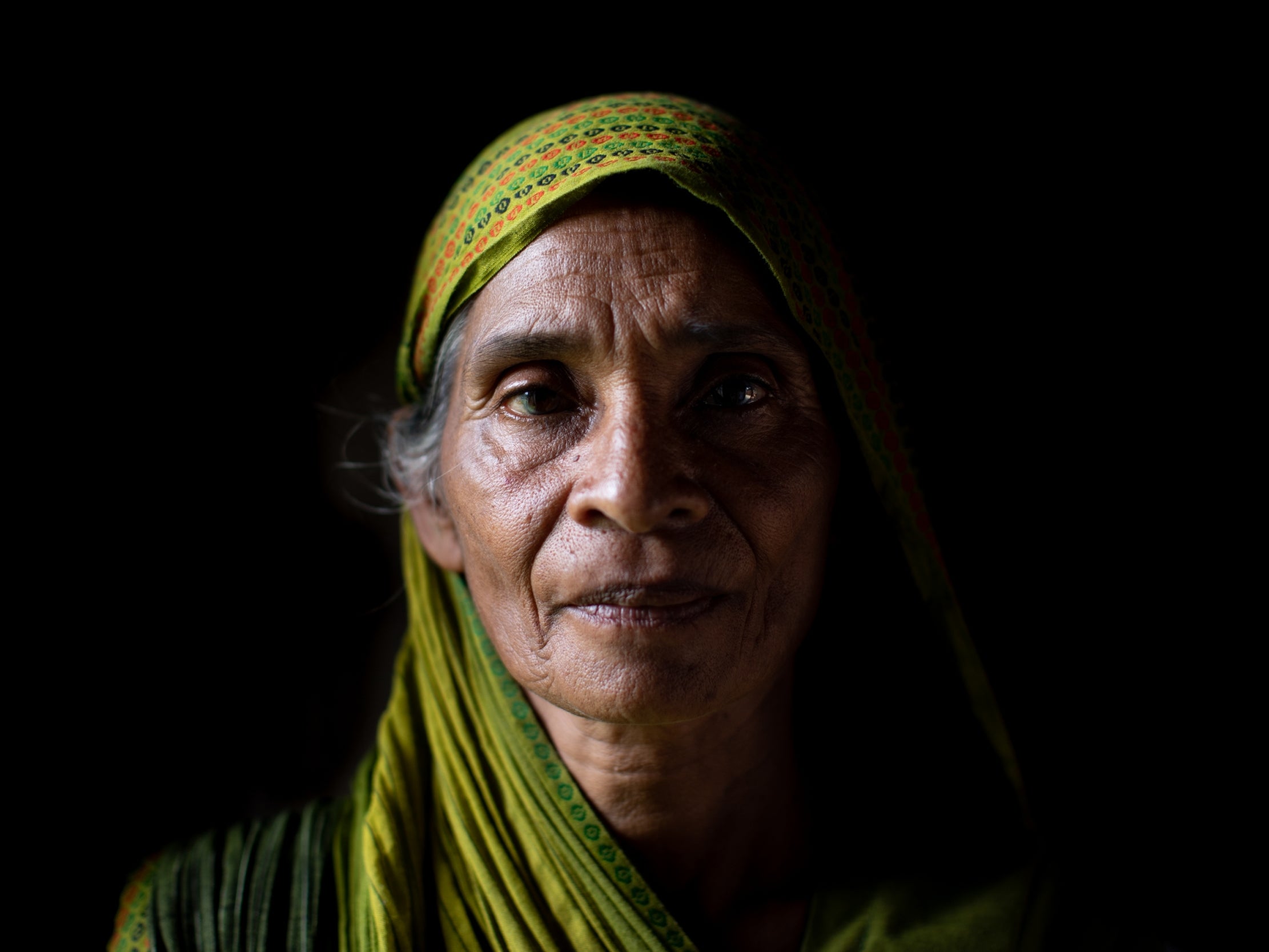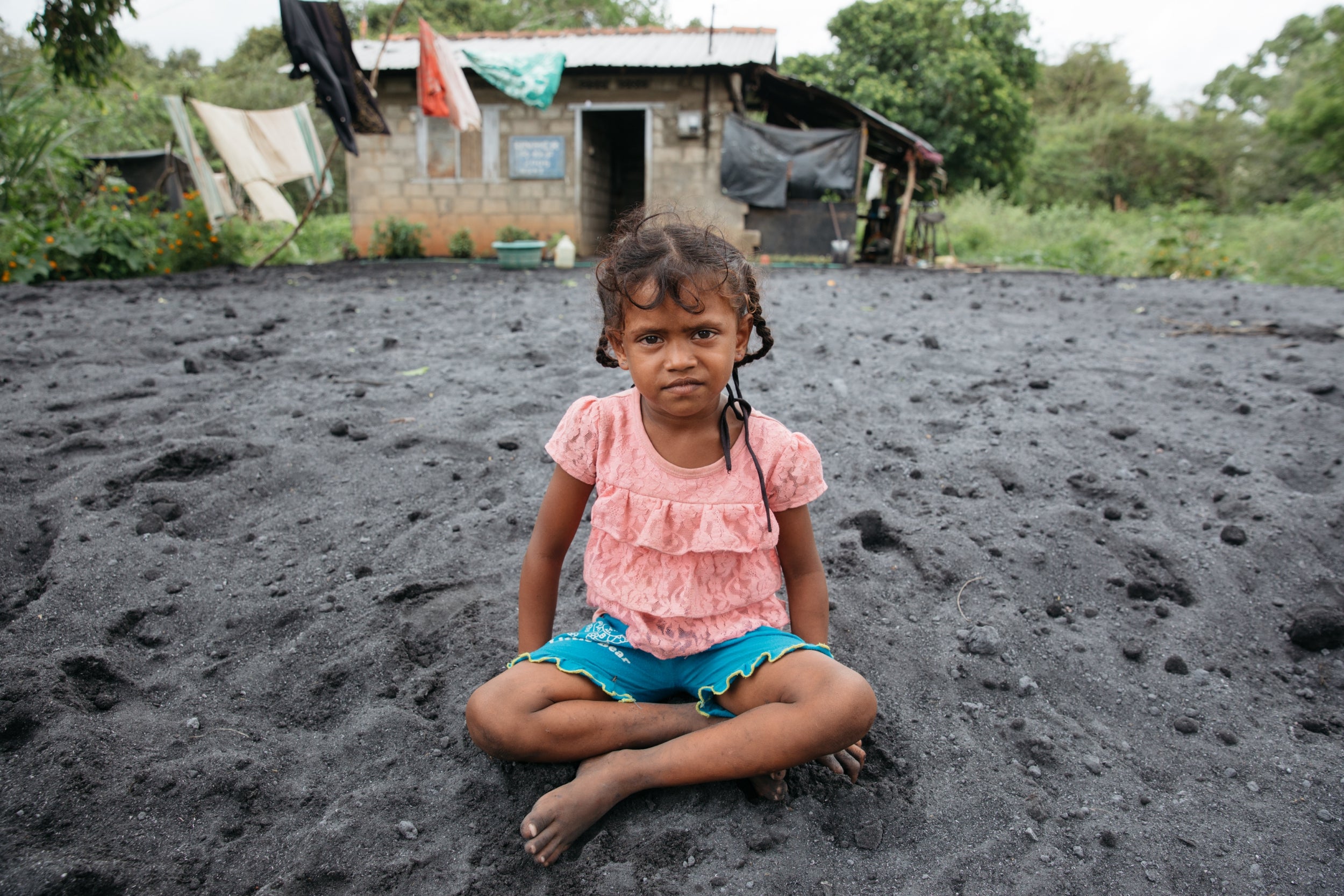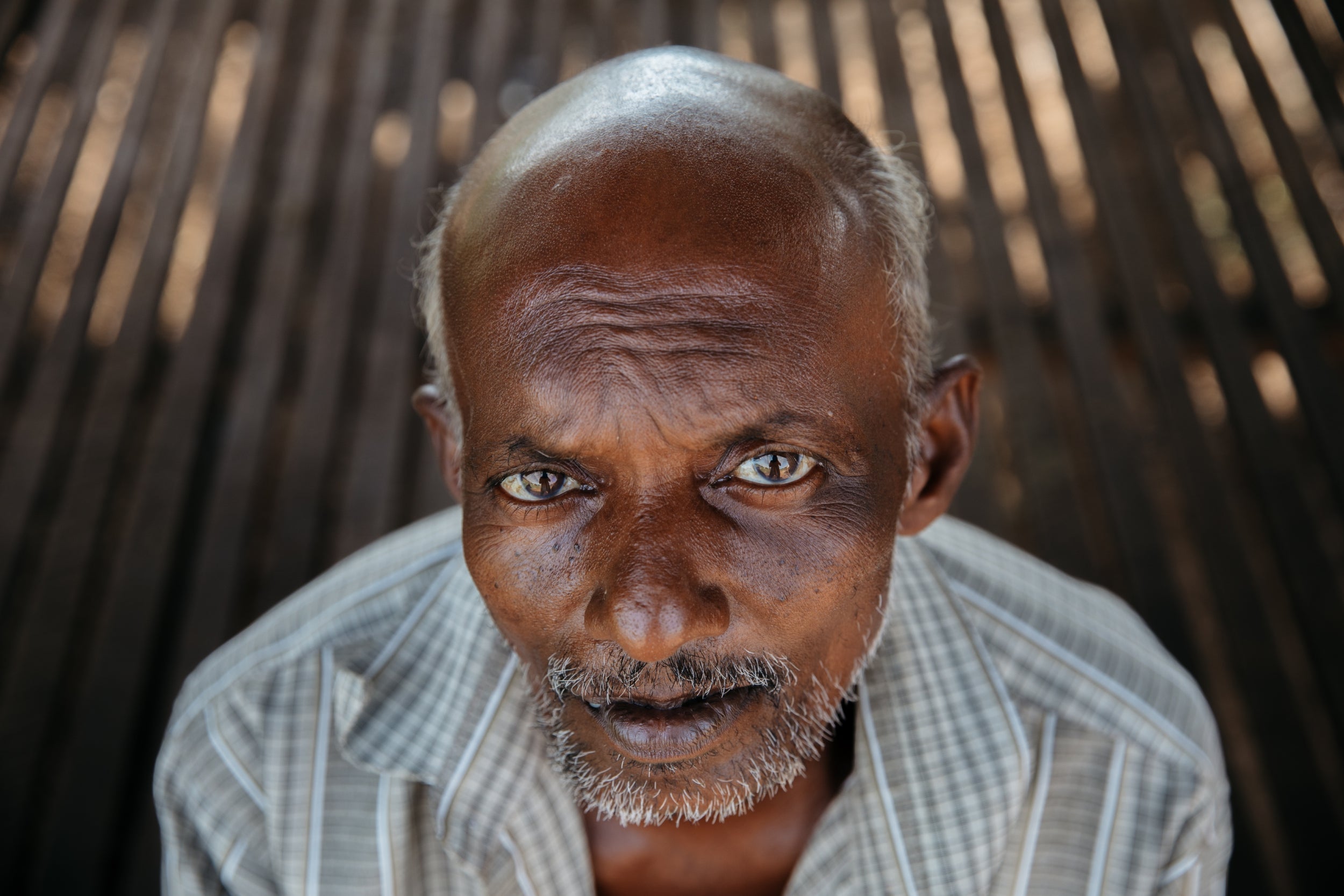In photos: Sri Lanka’s humanitarian crisis
Photojournalist Paddy Dowling travelled to remote regions of Sri Lanka to discover its secret humanitarian crisis, where families are left starving for days as they wait patiently for help

The morning rain danced hard off the warm tarmac on Colombo’s E03 expressway to Bandaranaike International Airport, and the majestic pelicans that had circled above were now perched on the arms of towering road lights along the central reservation. Muneer angled his neck over the steering wheel and glanced up at the dark sky through the top of the windscreen before announcing: “The rain will stop very soon”. Moments later, it did.
Muneer, 42 was born among the hustle and bustle of Colombo, where he still lives with his wife and four children. He is a slight man, impeccably well groomed and dressed with military precision in slacks, polo shirt and small rimless spectacles. Whilst he made polite conversation, his softly spoken tone permitted the space to momentarily question: “Documenting refugees? Here in Sri Lanka? A jewel in South Asia frequented and adored by discerning travellers the world over?” However beneath the veneer of Sri Lanka’s beauty, is the legacy of a brutal past that still haunts many of its people today.
Sri Lanka remains paralysed by the effects of a 26 year civil war. The Liberation Tigers of Tamil Eelam (LTTE) fought for the right to an independent state in the northern and eastern regions of the island, a conflict which ended in May 2009 when the Tamil Tigers’ rebel leader Velupillai Prabhakaran was killed by the Sri Lankan army.
The cost of human life during the conflict is unclear, however estimates range from 80,000 to 100,000, of which at least 40,000 were civilians. In the last three months of the offensive against the Tigers, the UN claims approximately 6,500 civilians were killed and 14,000 wounded.

Muneer volunteered to help with with logistics at Menik Farm Camp, in a medical unit which handled up to 400 patients daily, suffering gunshot and shrapnel wounds as well as from acute malnutrition and dehydration. By the end of the war, Menik had handled around 300,000 internally displaced persons (IDPs) from the northern district of Sri Lanka, in what was regarded at the time as the world’s largest IDP camp.
He recalled the day an eight year old boy died in his arms upon arrivial at the camp, his family unable to get medical attention in time. “There were many such cases” he said. Muneer’s gentle tone tapered off to silence and we left him alone with his thoughts.
As we drove up Sri Lanka’s western coast – destination Trincomalee – we basked in sunshine, the palm trees swaying to the warm gentle breeze that whistled through the car’s open windows.
Beyond Anuradhapura, 55km from Trincomalee, is the small village of Kulumeemakada, where we met 35 year old Hairunisa. She had been forced into a life of repaying loans to her late husband’s relatives through sexual favours, to support her mother and two children. Identified as a person of concern by NGO Muslim Aid, she had been enrolled into its ”livelihoods” programme – designed to provide beneficiaries with a sense of economic empowerment. Hairunisa needed only £200 to purchase an industrial sewing machine and fabric, and started a business from home. With the broadest of smiles, she said: “This charity has allowed me not just to feed and support all my family [and] save a little each month, but above all has restored my dignity as a woman so I don’t have to do those things for money any more.”
Another 30km up the Trincomalee highway we peeled off and navigated around deep potholes on a dirt track that nestled between the endless paddy fields, before our convoy arrived in the small settlement of Muththunagar.

As we walked through the village and our boots kicked up fine dust, eyes peered out to watch us from the dark doorways of huts and outbuildings made from an assortment of brick, concrete, corrugated tin and “cajum” – dried palm tree leaves.
Muththunagar’s residents are off grid in every sense, they appeared uneasy with visitors and I remain unconvinced the 600 villagers are included in the UNHCR’s 2018 figures of 42,956 people of concern in Sri Lanka. The stillness was eventually broken as, one by one, the villagers stepped forward to greet us and share their stories.
Sahira, 34, introduced her husband Ahm, 38, and her four children: Fathima, 10: Mohamed, aged eight; six year old Nasmeeya; and their youngest Nasbeeya, four.
Sahira’s kind face was framed by a vivid yellow headscarf she used to mop away the tears that rolled down her cheek as she explained how they struggled to feed their children, let alone themselves. Ahm was a construction worker and typically earned around £5 per day, but due to the lack of new homes being built in nearby towns, he had been unemployed for many months. Sahira picked mussels on a nearby beach during 12 hour shifts, and sold the catch to wholesalers at the nearby market. The work is exhausting and dangerous, and the £2.50 paid per day was not enough to feed the family of six, crammed into their small home.
In 1990, villagers from Muththunagar fled under heavy shelling as they were caught in the crossfire between Sri Lankan government forces and the LTTE. A majority of residents returned in 2006 to find their homes destroyed and plots overgrown. The UNHCR laid foundations for ambitiously sized homes but they were never built, with the villagers instead left homes too small to raise growing families.
After the war, 75,819 IDPs were released from camps like Menik Farm to villages like Muththunagar, and were still unable to return home as they were classed as being “resettled”. There was enormous pressure from the international community to see a progressive shift from humanitarian assistance to recovery in Sri Lanka.
“We are desperate, we need help,” said Sahira in floods of tears, “we don’t have any money to buy food and if you don’t believe me, please check inside my home you won’t find a single rupee.”
As we listened to Sahira’s story of struggle, and the accounts of many other families in Muththunagar, it became apparent being unable to put food on the table was common. With an incredible sense of heaviness, we waved goodbye to the villagers and continued our journey to Trincomalee.
The short drive to our beachside hotel was silent as we processed the stories of the day – it wasn’t long before we were stood at reception and checking in with holidaymakers from every corner of the globe who were completely oblivious to the acute suffering of many living nearby.
Some 30km from the polite breakfast chatter of guests, the chiming of crockery and the hotel gardener who scared off crows with his catapult, we arrived at Shafi Nagar, in the town of Muttur.
Rafeek 55, was sat asleep with shoulders slumped on a bench beyond the boundary fence of his plot, in the shade beneath a large tree. He rose to his feet slowly as we approached.

Rafeek was tall and frail and his eyes protruded from his thin, tired face. He moved slowly and his breath was shallow as he struggled to hold conversation. He worked for many years as a skilled stonemason but was forced into early retirement due to a deteriorating blood condition which required monthly treatment he simply could not afford. Rafeek’s eyes pointed to the ground, and with a look of embarrassment he explained he had been unable to feed his family for two days. When we asked him whether they would eat that evening he replied: “I don’t think so.”
Rafeek and his wonderful family were incredibly welcoming and constantly apologised for being unable to have offered us hospitality. Visions of them huddled in their dark cajum hut without food for a third consecutive night were an injustice we struggled to comprehend.
A five minute drive away, just off the bustling samosa stall packed main street of Muttur, was a small industrial unit with a long queue of people outside waiting patiently in the relentless afternoon sun. Here we met Abdul, 50, known as the “Tailor of Muttur”.
Abdul ran a successful tailoring and alterations business from home and earned £75 per month. His desire to provide the best education for his children and a better quality of life for his family had led him to apply for a £150 microfinance loan from Muslim Aid. With the funds he purchased a better sewing machine and fabric and rented a small unit where we found him working. The loan had been repaid in full and now Abdul was widely regarded as the most popular tailor to visit for children’s clothes as well as men’s trousers, shirts and jeans. He had increased his monthly income to £225 and such was the growth of his business venture, he had plans to create six new jobs in the following months.
As our time in Sri Lanka drew to a close there was a feeling NGOs needed to change their role from enforcing universal ideas, to concentrating on much smaller scale, bespoke solutions.
Since 2005, Muslim Aid Sri Lanka has facilitated a much more organic and “co-productive” process, that enables people to take responsibility for the changes in their lives that need to happen. It is engaging in livelihood projects and providing microfinancing arrangements that create this empowering process to effect long term, sustainable change.
For more information visit muslimaid.org
Join our commenting forum
Join thought-provoking conversations, follow other Independent readers and see their replies
Comments
Bookmark popover
Removed from bookmarks